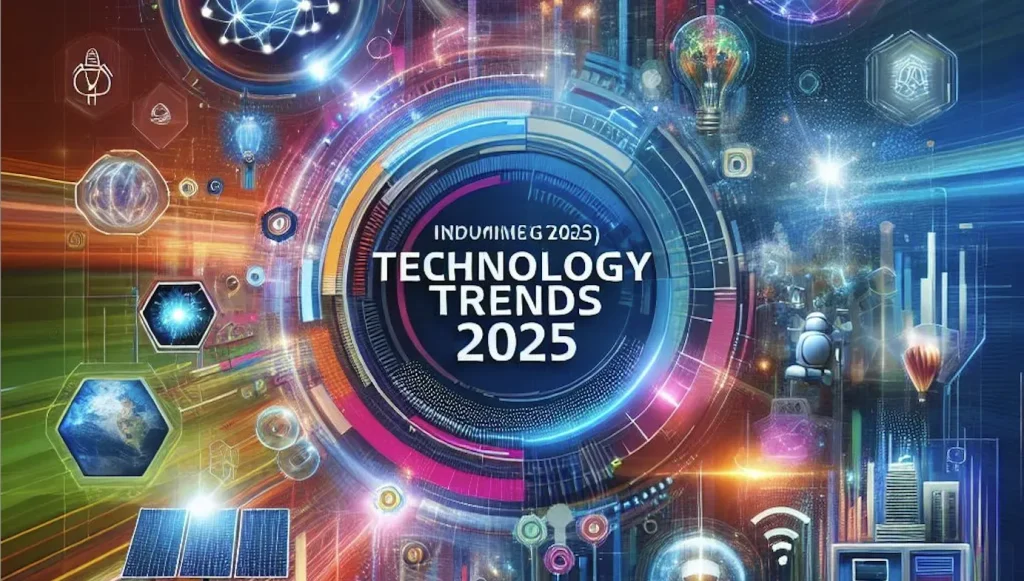Sustainable Technology Solutions are not a niche initiative but a strategic business imperative. This shift translates into measurable ROI for sustainable technology, helping boards justify investment, accelerate deployment, and align IT with strategic outcomes. The broader green IT benefits extend beyond energy bills, delivering cost savings from green IT, reducing maintenance toil, and strengthening resilience across platforms, networks, and data centers. The implementation of sustainable IT solutions builds a competitive advantage through sustainability by improving customer trust, supplier reliability, and market differentiation. In this post, we’ll map a practical business case and show how sustainable technology can unlock value, ROI, and growth by tying carbon-aware choices to measurable financial metrics.
From another angle, the topic can be framed as eco-friendly IT and green computing that reduce carbon footprints and align technology choices with environmental goals. Organizations can pursue energy-efficient data centers, low-carbon hardware, and circular hardware lifecycles to achieve sustainability rewards without sacrificing performance. Sustainable IT governance emphasizes transparent environmental reporting, responsible procurement, and cloud strategies powered by renewable energy partners to minimize risk and optimize total cost of ownership. Taken together, these terms and practices map to the same value proposition – lower energy bills, reduced waste, greater resilience, and a trusted brand built on responsible technology choices. Ultimately, adopting these approaches translates to a future-proof technology stack that delivers sustainable growth, stakeholder trust, and enduring competitive positioning in an evolving digital economy. These refinements also support regulatory compliance and investor confidence by demonstrating responsible technology stewardship. In short, sustainable technology is good business.
ROI for Sustainable Technology Solutions: Building a Value-Driven IT Modernization Strategy
Achieving ROI for sustainable technology requires a holistic view that goes beyond the upfront purchase price. Leaders should map total cost of ownership (TCO), energy use, capacity, and labor costs to the long-run value delivered by modernization efforts. When outcomes are tied to energy efficiency, reliability, and risk reduction, Sustainable Technology Solutions become a strategic investment with measurable returns. This framing clarifies the ROI for sustainable technology when outcomes translate into tangible financial and strategic gains.
To build the business case, quantify energy savings, maintenance reductions, and productivity improvements, then translate them into financial metrics that executives care about. Include scenarios that compare capital expenditures against operating expenditures over 3–5 years, showing how greener choices compound into lower TCO and stronger resilience. The result is a compelling narrative that connects technology choices to revenue growth, risk reduction, and long-term shareholder value.
Cost Savings from Green IT: Practical Pathways to Lower TCO and Higher Margins
The cost savings from green IT come from several levers: reducing energy per compute unit, extending hardware lifecycles, and lowering cooling and cooling-related expenses. By choosing energy-efficient servers, virtualization, and smarter data-center orchestration, organizations can drive immediate and lasting reductions in operating costs. These improvements directly impact the bottom line while supporting sustainability goals.
These savings compound as workloads consolidate, automation reduces manual toil, and predictive maintenance prevents unplanned downtime, all contributing to healthier margins and greater budget flexibility for strategic initiatives. As energy prices and regulatory expectations rise, the cumulative effect of green IT investments becomes a core driver of resilience and financial performance.
Green IT Benefits: Environmental Impact and Business Performance in One Framework
Green IT benefits extend beyond energy bills to include risk reduction, regulatory alignment, and enhanced brand value. Lower emissions, responsible sourcing, and transparent reporting resonate with customers, investors, and employees, creating a stronger value proposition across the business.
Organizations that communicate progress through sustainability dashboards and third-party assurances often see faster cycles in financing, better supplier terms, and greater market trust—clear evidence of green IT benefits in practice. When environmental and financial metrics align, the organization gains credibility and a broader competitive reach.
Implementation of Sustainable IT Solutions: From Strategy to Scalable Execution
Implementation of sustainable IT solutions requires a clear roadmap that moves from strategy to scalable execution. Start with governance, a pilot plan, and a phased rollout to reduce complexity and demonstrate early wins. This approach helps ensure that sustainability goals are embedded in architectural choices, procurement, and operating models.
During pilots, collect data on energy, performance, and user experience; use these insights to refine configurations, define KPIs, and establish a repeatable process that can scale across departments with interoperable technology. A disciplined rollout minimizes risk while proving the business value of sustainable IT investments.
Competitive Advantage Through Sustainability: Differentiating Technology in a Low-Carbon Era
Competitive advantage through sustainability emerges when technology decisions align with market expectations, risk controls, and stakeholder trust. Sustainable practices become a feature of the product and service roadmap, not an afterthought, influencing architecture, supplier selection, and go-to-market strategy.
Customers and investors increasingly favor partners who quantify environmental impact alongside financial performance, translating sustainable choices into real competitive differentiation and long-term value. By embedding sustainability into core capabilities, organizations can command premium positioning, resilience, and enduring loyalty.
Measuring Impact with Metrics and Governance: KPIs for Sustainable Technology Solutions
Measuring impact with metrics and governance for Sustainable Technology Solutions provides clarity and accountability for executives and teams. Align metrics with strategy to show how sustainability investments translate into growth and resilience. A data-driven approach ensures every initiative demonstrates tangible value and informs ongoing decision-making.
Key KPIs include ROI, Total Cost of Ownership (TCO), Energy Use Intensity (EUI), Power Usage Effectiveness (PUE), uptime, and carbon reductions, all tracked in dashboards that support ongoing governance and transparent reporting. With robust dashboards and clear accountability, leaders can steer investments toward the highest strategic returns while maintaining environmental commitments.
Frequently Asked Questions
What is the ROI for sustainable technology, and how do Sustainable Technology Solutions deliver measurable value?
ROI for sustainable technology is measured by comparing net benefits such as energy savings, labor savings, and capacity optimizations against the total cost of ownership over time. Sustainable Technology Solutions typically drive value through energy efficiency, productivity gains, and risk reduction, supported by metrics such as ROI, TCO, Energy Use Intensity, and Power Usage Effectiveness. Beyond hard savings, they enable faster digital transformation and stronger resilience, contributing to a durable bottom line.
How do cost savings from green IT factor into the business case for Sustainable Technology Solutions?
Cost savings from green IT come from lower energy bills, reduced maintenance, longer asset lifecycles, and optimized cloud and data center operations. When included in a TCO and ROI model, these savings strengthen the business case for Sustainable Technology Solutions, making upfront investments more attractive and accelerating payback.
What green IT benefits can Sustainable Technology Solutions deliver, and how do they create a competitive advantage through sustainability?
Green IT benefits include lower emissions, reduced energy use, longer hardware lifecycles, stronger supplier sustainability, and better risk management. When these benefits are linked to customer and investor expectations, they translate into competitive advantage through sustainability. This leads to enhanced brand value, differentiated products, and improved market access.
What does the implementation of sustainable IT solutions look like in practice, and which KPIs should you track?
Implementation of sustainable IT solutions follows a structured roadmap. Start with a current state assessment, then define measurable KPIs, build a financial model comparing capital versus operating costs, and select partners with transparent sustainability practices. Run pilots, scale with governance, and report progress. Track KPIs such as PUE, EUI, asset utilization, uptime, waste reduction, cost savings, and measured carbon reductions.
How can Sustainable Technology Solutions help you gain a competitive advantage through sustainability while improving resilience and efficiency?
Sustainable Technology Solutions can create a competitive advantage through sustainability by combining efficiency with reliability and a strong environmental profile. This influences customer choice, investor confidence, and supplier selection while reducing risk and improving margins. Practices include greener cloud, sustainable procurement, and product roadmaps aligned with environmental goals.
Which metrics matter when evaluating Sustainable Technology Solutions, and how do they demonstrate ROI for sustainable technology?
Key metrics include ROI, Total Cost of Ownership, Energy Use Intensity, PUE, data center utilization, uptime, productivity, time to market, and carbon footprint reductions. Together these metrics show how Sustainable Technology Solutions drive financial value and environmental impact, supporting a credible ROI for sustainable technology.
| Aspect | Key Point | Impact / Significance |
|---|---|---|
| Strategic Imperative | Sustainable Technology Solutions are a strategic business imperative, driven by rising energy costs, supply chain volatility, and stakeholder expectations. | Aligns technology choices with efficiency, resilience, and environmental impact to create enterprise value. |
| Portfolio Scope | Broad portfolio includes energy-efficient data centers, greener software practices, circular-economy hardware planning, and cloud strategies that reduce carbon footprints. | Provides multiple levers to cut costs and emissions across IT, operations, and product lifecycles. |
| ROI & TCO | ROI analysis should include total cost of ownership (TCO) with long-term savings from energy, maintenance, and capacity optimization. | Justifies investments with a clear comparison of upfront costs and ongoing value, including productivity gains and risk reductions. |
| Metrics that Matter | Key indicators include ROI, TCO, Energy Use Intensity (EUI)/PUE, data center utilization, carbon reductions, resilience, productivity, and employee engagement. | Enables quantifiable storytelling for stakeholders and supports governance. |
| Roadmap for Implementation | A practical plan with eight steps: strategy alignment, current-state assessment, KPIs, financial modeling, partnerships, change management, pilots, and governance reporting. | Facilitates controlled, measurable deployment and scaling across the organization. |
| Competitive Advantage | When executed well, STS builds efficiency, reliability, and strong brand/reputation, attracting customers and investors who value sustainability. | Differentiates technology strategy and product roadmaps in a crowded market. |
| Real-World Scenarios | Examples include manufacturing upgrades with energy-even hardware and edge analytics, greener data centers, and smarter device management. | Demonstrates practical ROI and carbon-footprint reductions in varied contexts. |
| Risks & Considerations | Upfront costs, uncertain payback, and legacy-system integration challenges; mitigation includes pilots, clear metrics linkage, modular solutions, and change management. | Highlights the need for prudent planning and governance to sustain momentum. |
Summary
Conclusion: Sustainable Technology Solutions provide a framework to align technology investments with environmental goals and business value, delivering measurable ROI while reducing carbon impact. Descriptively, they shape how organizations design, deploy, and govern IT to balance cost savings, resilience, and brand reputation. Embracing Sustainable Technology Solutions today supports digital transformation, sustainable growth, and a durable competitive advantage for tomorrow.


